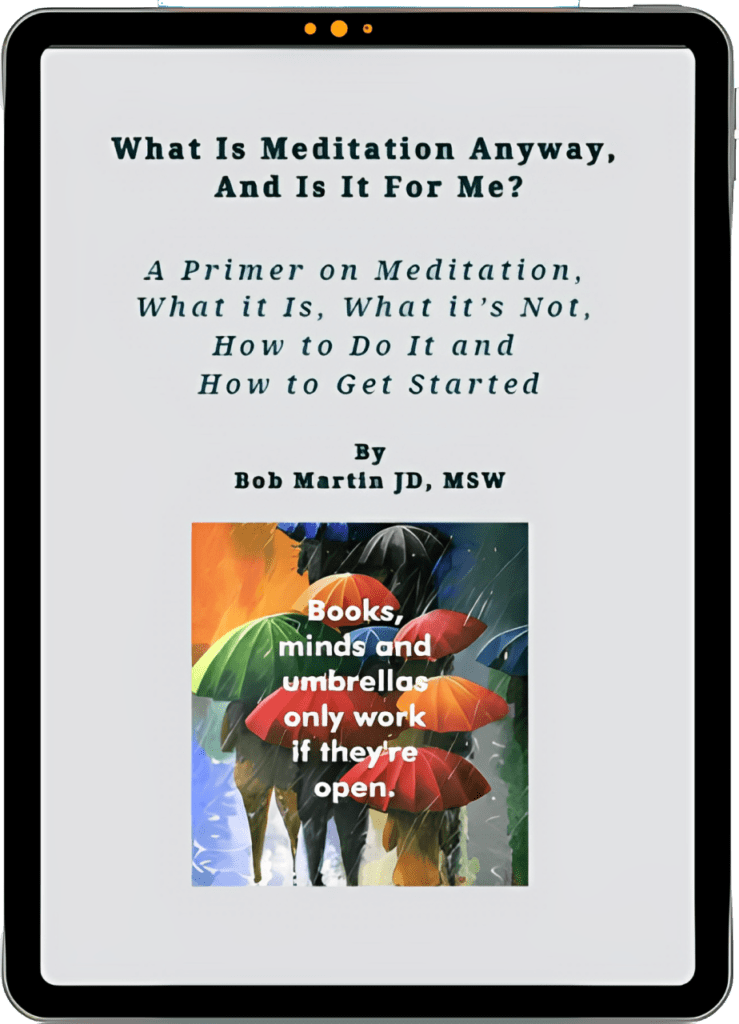Lately, I’ve been sitting with a very real and painful truth—the kind that makes the phrase “life’s ups and downs” feel a little too tidy.
A dear friend of mine recently died by suicide. The shock, the sadness, the helplessness—it comes in waves. Some days it stings sharply; some days it hums in the background. But it’s here. And I’ve found myself returning again and again to the simple practices that help me stay present—not to fix the pain, but to be able to bear it.
What I’m learning—again—is that meditation isn’t about rising above life. It’s about being able to stay with it, especially when life breaks your heart.
Why Practice at All?
A student once asked me after class, “So if I lose my husband… is that when I should meditate?”
I paused, and gently offered this back:
“Well… if your friend asked you to help him move his furniture into a second-floor walk-up, would you start going to the gym the morning of the move?”
She smiled, and I think we both felt the truth in it.
We don’t build strength in the middle of the storm. We build it on quiet, ordinary days, with steady, small choices. We show up for our cushion or our breath or our walk in the woods—not because we’re already in crisis, but so we’ll have the resilience to meet the crisis when it comes.
Because eventually, it will come. Life guarantees that.
Building a Tolerance for Discomfort
Meditation, at its heart, is a training ground for being with discomfort—one breath, one moment at a time. Over the years, my practice has gently expanded what I now understand as my window of tolerance—the range of emotional experience I can stay present with without feeling overwhelmed or shut down.
It’s not that I don’t still get knocked over. I do. But the difference is: I don’t disappear as easily. I can cry and still breathe. I can ache and still stay grounded. And perhaps most importantly, I can sit with others in their grief without needing to fix it or run away from it.
That, to me, is the deepest gift of this work.
This Isn’t About Enduring, It’s About Softening
Let me be clear—building tolerance doesn’t mean toughening up. It’s not about muscling through the pain. More often, it’s about softening into it, allowing it to be there without rushing to change it.
Some days, I sit in silence and let the ache be exactly what it is. I notice the tightness in my chest, the tiredness behind my eyes. I breathe. I don’t force it away. I don’t try to cheer myself up. I just stay. That’s the practice.
And beneath that willingness to stay, there’s something essential: self-compassion. A quiet voice inside that says, “It’s okay to feel this. You’re allowed to grieve. You don’t have to hold it all together.”
That voice didn’t come naturally. It’s been cultivated, patiently, over time.
Practice So You Can Be Present
This week, I’ve been able to sit with my friend’s family. I’ve held hands, listened to stories, stood in long silences. I didn’t come with answers. But I came with presence. And that presence, I believe, is only possible because I’ve spent years practicing how to be with my own hard stuff—without running, without judging.
This is why we practice.
Not to escape pain, but to meet it with grace. Not to be perfect, but to be present. Not to feel better, necessarily—but to become better at feeling.
Just Begin Where You Are
If you’re reading this in the middle of your own “down,” please know: you don’t have to do this perfectly. There’s no scorecard for how well you meditate or how gracefully you grieve. What matters is your willingness to show up—to breathe, to notice, to be kind to yourself in the process.
And if you’re in an “up,” life feeling relatively okay, I gently invite you: don’t wait for the fall to begin your practice. Start now. Build your strength in the quiet moments. Stretch your window of tolerance. Learn how to sit with your own heart. Because one day, someone you love may need your steadiness. And you’ll be ready—not because it doesn’t hurt, but because you’ve trained yourself to stay.
With love,
Bob
A Short Practice: Sitting with What’s Here
You don’t need a special cushion or a long span of time. Try this right now, just as you are:
- Take a breath.
Let it be soft, natural. Nothing fancy. Just feel the inhale… and the exhale. - Notice what’s present.
How are you feeling in this moment? Maybe there’s sadness, restlessness, calm, or even numbness. Whatever’s here, let it be okay.
You might name it softly in your mind: “This is grief.” “This is tightness.” “This is stillness.” - Place a hand on your heart, or somewhere comforting.
Offer yourself a simple phrase of compassion.
Something like: “This is hard, and I’m doing the best I can.”
Or “May I be kind to myself in this moment.” - Stay for a few breaths.
Just being. No fixing. Just you, with yourself, gently held.
This is how we begin. Over and over again.
Want to Keep Practicing?
Check out my collection of 300+ Mindfulness Instructions and Worksheets. These are downloadable resources designed to help you practice, notice, and return to presence in your daily life- some might support your morning routine, others may open a doorway during a hard moment.


